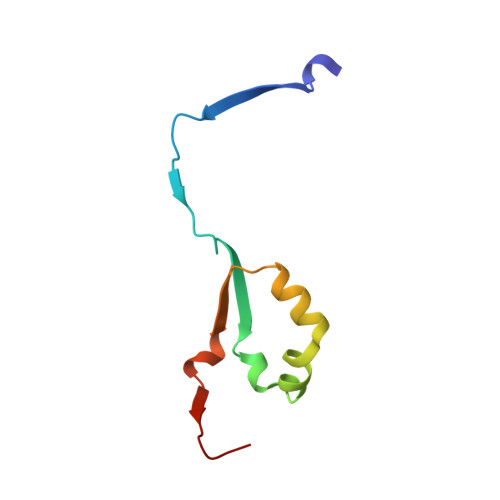Structure-based lead optimization to improve potency and selectivity of a novel tetrahydroimidazo[1,2-a]pyridine-5-carboxylic acid series of heparanase-1 inhibitor.
Imai, Y., Suzuki, R., Wakasugi, D., Matsuda, D., Tanaka-Yamamoto, N., Ohki, Y., Mima, M., Endo, M., Tabata, R., Matsuzawa, H., Hasegawa, Y., Kato, S., Sugisaki, M., Miyagawa, H., Fujimoto, N., Fukunaga, T., Kato, S., Takahashi, T., Kakinuma, H.(2023) Bioorg Med Chem 93: 117460-117460
- PubMed: 37660465
- DOI: https://doi.org/10.1016/j.bmc.2023.117460
- Primary Citation of Related Structures:
8JYG - PubMed Abstract:
Heparanase-1 (HPSE1) is an endo-β-d-glucuronidase that is the only mammalian enzyme known to cleave heparan sulfate (HS) of heparan sulfate proteoglycans (HSPG), a key component of the glycocalyx layer of the vascular endothelium matrix. Inhibition of HPSE1 has therapeutic potential for cancer and proteinuric kidney diseases. We previously reported that 2 showed a moderate potency as an HPSE1 inhibitor and an issue of selectivity against exo-β-d-glucuronidase (GUSβ) and glucocerebrosidase (GBA) remained. A structure-based lead optimization of 2 using X-ray co-crystal structure analysis and fragment molecular orbital calculation resulted in 4e, which showed a more than 7-fold increase in HPSE1 inhibitory activity. The subsequent introduction of a methyl group into the 6-hydroxy group of 4e resulted in 18 with reduced inhibitory activities against GUSβ and GBA while maintaining the inhibitory activity against HPSE1. The inhibitory activities of 18 against serum HPSE1 in mice were significant and lasted for 4 h at doses of 3, 30, and 100 mg/kg. Compound 18 could be a novel lead compound for HPSE1 inhibitors with improved inhibitory activity against HPSE1 and increased HPSE1 selectivity over GUSβ and GBA.
- Medicinal Chemistry Laboratories, Taisho Pharmaceutical Co., Ltd., 1-403 Yoshino-cho, Kita-ku, Saitama 331-9530, Japan.
Organizational Affiliation:




















